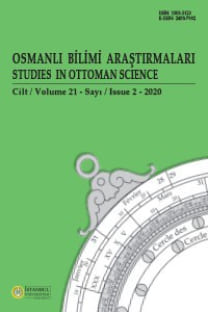Astronomik Düzenlilikten Sosyo-Matematik Uylaşıma Takvim
Although, positivism is a modern concept, its roots were embedded in human life before its formulation, because basic mathematics was in use with numbers and symbols to organize the daily life. Measuring instruments and calendars were characteristic examples of this phenomenon and it‟s possible to call this state as “proto-positivism”. Astronomy, as a result of its cosmic structure, is an exact science. On the other hand, sociology is concerned with social life which is highly complex. Since the early stages of history, societal cultures involved rules in accordance with the daily life based on the movements of the Moon and the Sun. The present work aims to study this process in the light of socio-mathematical and socio-astronomical concepts as based on Uluğ Takvimi, a folk calendar published in 1940 in Turkey. The days of the year are listed and the related important meteorological features are defined by referring to the late 19th and early 20th century calenders published in Turkey.
Anahtar Kelimeler:
Halk takvimleri, hava tahmini, proto-pozitivizm, sosyo-matematik sosyo-astronomi, Uluğ Takvimi, Saatli Maarif Takvimi, Türkiye‟de halk meteorolojisi
Calendar: From astronomical regularity to socio-mathematical consensus
Although, positivism is a modern concept, its roots were embedded in human life before its formulation, because basic mathematics was in use with numbers and symbols to organize the daily life. Measuring instruments and calendars were characteristic examples of this phenomenon and it‟s possible to call this state as “proto-positivism”. Astronomy, as a result of its cosmic structure, is an exact science. On the other hand, sociology is concerned with social life which is highly complex. Since the early stages of history, societal cultures involved rules in accordance with the daily life based on the movements of the Moon and the Sun. The present work aims to study this process in the light of socio-mathematical and socio-astronomical concepts as based on Uluğ Takvimi, a folk calendar published in 1940 in Turkey. The days of the year are listed and the related important meteorological features are defined by referring to the late 19th and early 20th century calenders published in Turkey.
Keywords:
Folk calendars, sociology of everyday life weather-lore, protopositivism, Uluğ Takvimi, Saatli Maarif Takvimi, socio-mathematics, socioastronomy, folk meteorology in Turkey,
___
- -
- ISSN: 1303-3123
- Yayın Aralığı: Yılda 2 Sayı
- Başlangıç: 1995
- Yayıncı: İstanbul Üniversitesi Edebiyat Fakültesi
Sayıdaki Diğer Makaleler
Anadolu Kültüründe Kilit (Doğu Ve Güneydoğu Anadolu Örnekleri)
Semra SARAÇOĞLU, Bülent KARAKAŞ
Prof. Kurt Krause'nin (1883-1963) Türkiye Florası İle İlgili Gezilerı ve Yayınları
Ankara Yüksek Ziraat Enstitüsü’nde Mülteci Bilim Adamları
Deneylerle Elektriği Tanıtan Bir Türkçe Eser: Yahya Naci Efendi’nin Risale-i Seyyale-i Berkiyye’si
Kırklareli-Demirköy “Fatih” Dökümhanesi Su Enerjisi Düzenekleri Ön Değerlendirmesi
Yaycı Yusuf Beşe Terekesinin Düşündürdükleri
Hofrat Prof.Carl Haussknecht'in (1838-1903) Türkiye bitkileri koleksiyonu
Osmanlı Teknoloji Tarihinden Bir Kesit: Gemi İndirme Yöntemleri
